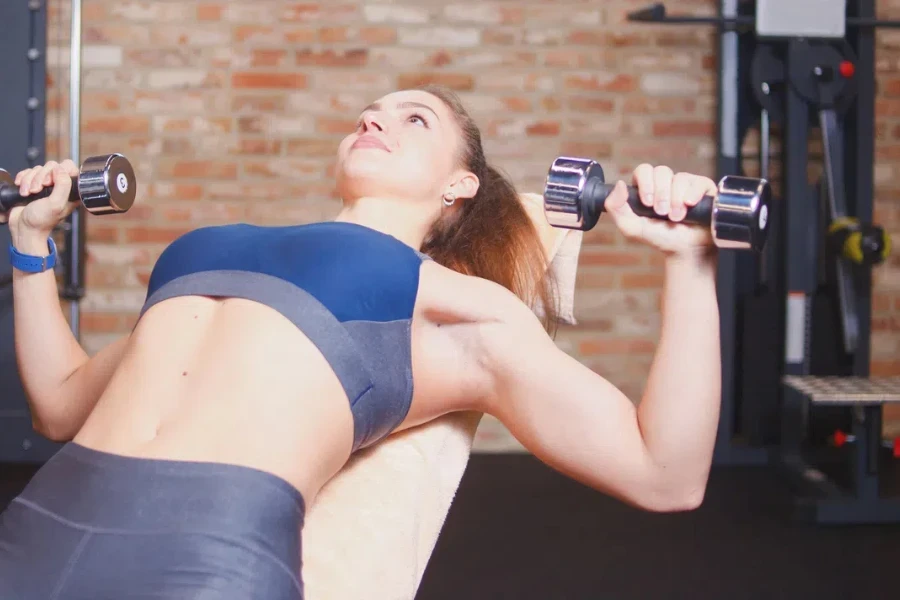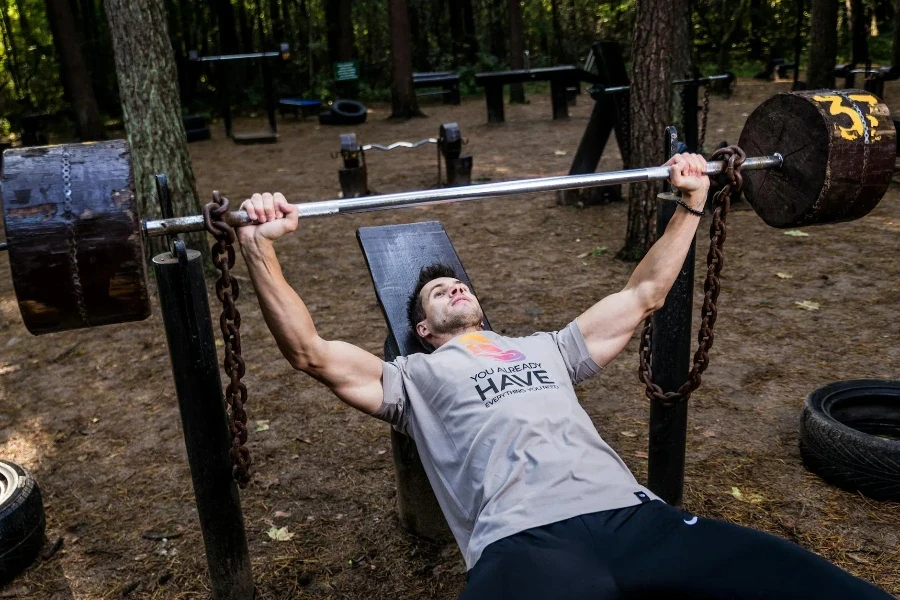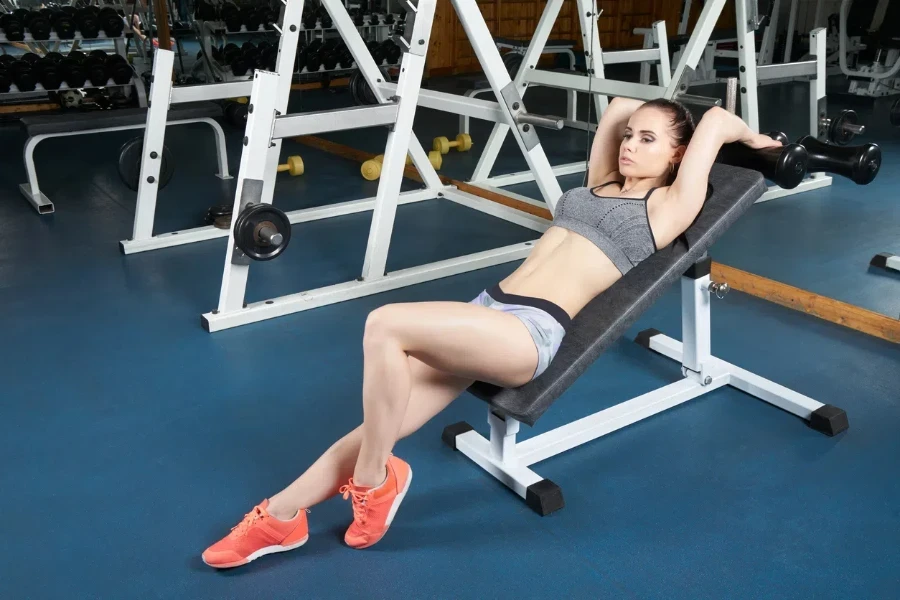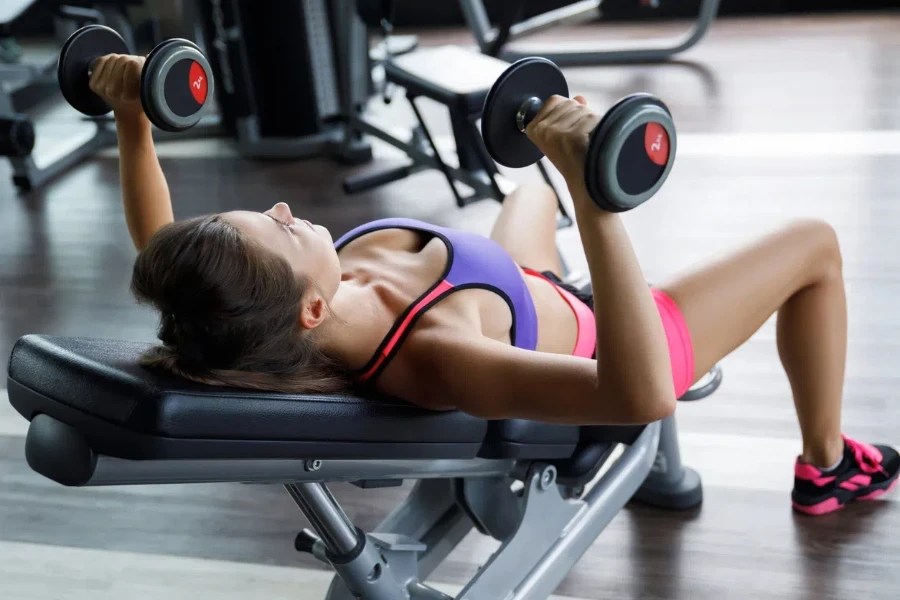The incline bench press is a pivotal exercise for anyone looking to enhance their upper body strength and aesthetics. By targeting the upper chest and shoulders, it offers a unique angle to traditional bench pressing that can significantly impact your muscle development. This article delves into the intricacies of the incline bench press, from its growing popularity to detailed usage instructions.
Table of Contents:
– What is the incline bench press?
– The popularity of the incline bench press
– Is the incline bench press good?
– How to choose the right incline bench press
– How to use the incline bench press
What is the incline bench press?

The incline bench press is a variation of the traditional bench press exercise, performed on an incline bench. The bench is typically set between a 15 to 30-degree angle, though adjustments can be made based on specific training goals or preferences. This exercise primarily targets the upper pectoral muscles (pectoralis major) and the anterior deltoids, offering a more focused development on the upper chest compared to the flat bench press. Additionally, it engages the triceps, making it a comprehensive upper body workout.
The mechanics of the incline bench press require meticulous attention to form to maximize muscle engagement and minimize the risk of injury. The angle of the bench changes the trajectory of the press, necessitating a slight alteration in grip width and arm angle compared to the flat bench press. Understanding these nuances is crucial for anyone looking to incorporate this exercise into their workout regimen effectively.
The popularity of the incline bench press

The incline bench press has seen a surge in popularity among both recreational lifters and professional athletes. This uptick can be attributed to its effectiveness in targeting the upper chest, an area often underdeveloped by the flat bench press alone. Moreover, its ability to sculpt a more aesthetically pleasing upper body silhouette has made it a staple in bodybuilding and strength training programs.
Social media and the fitness industry have played significant roles in popularizing the incline bench press. Fitness influencers and trainers often showcase the exercise as a key component of upper body routines, highlighting its benefits and versatility. Furthermore, the growing emphasis on functional fitness has propelled the incline bench press into the spotlight as a fundamental exercise that enhances performance in various sports and daily activities.
Is the incline bench press good?

The incline bench press is more than just a good exercise; it’s an essential tool for developing upper body strength and muscular balance. By targeting the upper chest and shoulders, it fills the gap left by the flat bench press, ensuring a well-rounded chest development. This balanced approach to muscle building not only improves aesthetics but also enhances functional strength and reduces the risk of injury.
Moreover, the incline bench press can be adapted to suit a wide range of fitness levels and goals. Whether you’re a beginner looking to build foundational strength or an advanced lifter aiming to break through plateaus, the incline bench press can be modified in terms of angle, weight, and technique to meet your needs. Its versatility and effectiveness make it a valuable addition to any workout program.
How to choose the right incline bench press

Choosing the right incline bench press setup is crucial for both safety and effectiveness. The first consideration should be the bench itself. Look for a sturdy, adjustable bench that can securely lock into various angles. Stability is key to preventing accidents and ensuring a productive workout. The adjustability allows for customization based on individual preferences and training goals, making it a versatile piece of equipment.
Next, consider the type of weight you’ll be using. Barbells and dumbbells are the most common options, each offering unique benefits. Barbells allow for heavier lifts, promoting maximum strength development. Dumbbells, on the other hand, require more stabilization, engaging additional muscle fibers and promoting muscular balance. Depending on your goals and experience level, you may choose one over the other or incorporate both into your routine.
How to use the incline bench press

Using the incline bench press effectively requires attention to form and technique. Begin by setting the bench to the desired angle, typically between 15 to 30 degrees. Lie back on the bench with your feet planted firmly on the ground, creating a stable base. Grip the barbell or dumbbells with your hands slightly wider than shoulder-width apart, ensuring your wrists are straight and strong.
As you lower the weight, maintain control and aim for a bar path that ends just below the collarbone. Keep your elbows at a 45-degree angle to your torso to reduce shoulder strain. Press the weight up and slightly back towards the rack, following the natural arc of your upper body movement. This motion engages the target muscles effectively while safeguarding against injury.
Conclusion
The incline bench press is a versatile and effective exercise for building upper body strength and aesthetics. Its ability to target the upper chest and shoulders makes it a valuable addition to any strength training program. By understanding the nuances of the exercise and adhering to proper form and technique, lifters can maximize their gains while minimizing the risk of injury. Whether you’re a novice or an experienced athlete, incorporating the incline bench press into your routine can elevate your upper body workout to new heights.




